WiFi Router Lights: Everything You Need To Know!

Like the modem lights, wireless routers also have LEDs on their front. They can glow in different colors to indicate different scenarios. There are generally 3 states of status lights on a router: solid, blinking, or off or no light.
Knowing about these lights can help you understand the current state of your internet and the device. For instance, you can know if:
- The router is getting power
- Which frequency band is active — 2.4 GHz or 5 GHz
- Whether the ethernet port is active or not
- A USB device is connected
- WPS mode is enabled or disabled
In this article, I shall touch upon every light, along with their activities, ideal color, probable issues, and quick fixes. So, without further ado, let’s dig in!
1. Power Light
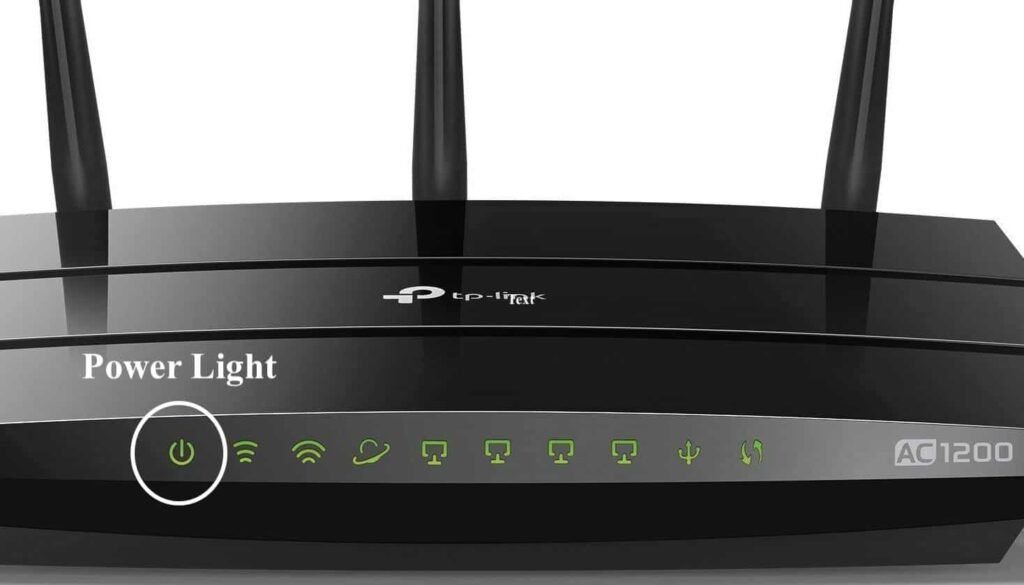
Meaning: It indicates the router’s power status, whether on or off.
Ideal Light Color: Solid Green
Different states of Power light and their meanings:
- Solid Green: If the power LED is on and solid green in color, the router is active and ready for use.
- Flashing: If the power LED is flashing, it indicates that the router is booting up and will turn solid green once it’s ready. It can also imply that the router is updating its firmware. Let the router complete the process, and it will start automatically.
- Off or No light: It means that the router is off and it’s not receiving any power.
Check the power cable and see if it’s attached properly. Unplug the power cable and wait for a minute before plugging it back in.
2. Internet
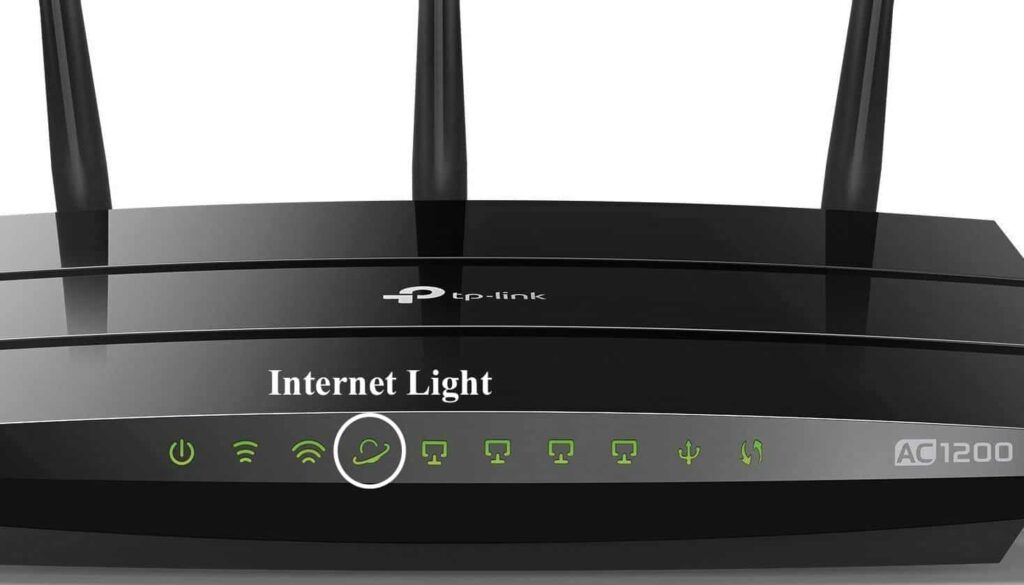
Meaning: Shows if the router is having an active internet connection.
Ideal Light Color: Solid Green
Different states of Internet light and their meanings:
- Solid Green: This indicates that the router has an active internet connection and is ready for use.
- Flashing: A flashing light means the router is connecting to the internet. Wait for some time, and you should see a solid green light automatically.
- Solid Orange/Amber: A solid orange or Amber light implies that the internet port is in use, but there is no internet connection. This can happen if there is some local internet outage or another issue from your ISP.
- Check the internet port on the router and re-attach the cable. Contact your ISP and check if there is any issue from their side.
- Off or No Light: It indicates that the internet port is not in use and hence there is no internet connection. Clean the internet port and check for any moisture or dirt deposits. Also, check if the cable is damaged from anywhere.
3. WiFi (2.4 GHz & 5 GHz)
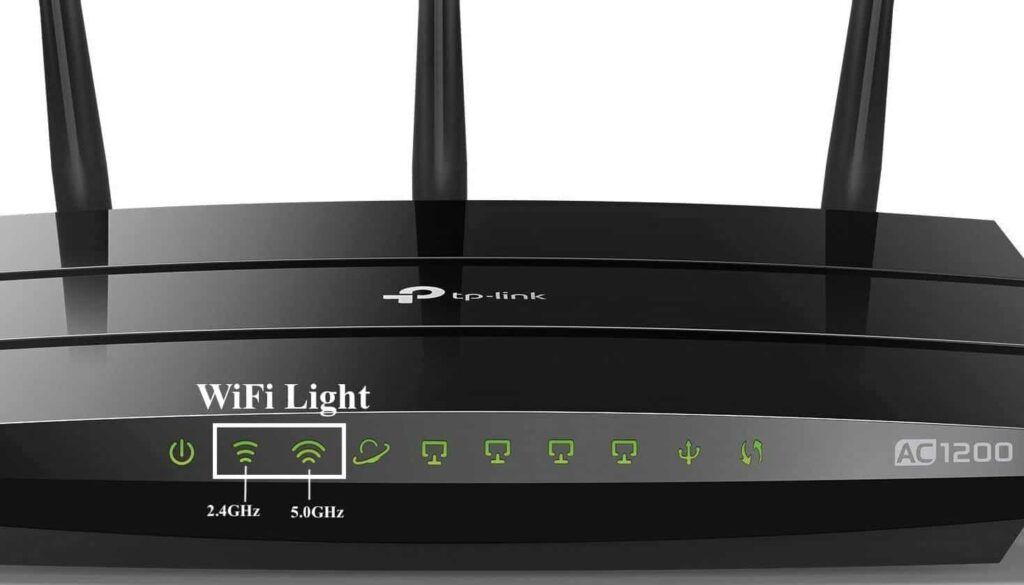
Meaning: Shows the status of WiFi connection (2.4GHz, 5GHz)
Ideal Light Color: Solid Green/White
Different states of Power light and their meanings:
- On: If your 2.4 GHz or 5 GHz LEDs are on, the connection is active on the specific frequency bad. You can connect your device to the router at that frequency.
- Off or No Light: If any of the 2.4 GHz or 5 GHz LEDs is off, the specific frequency is not active. This can happen if the WiFi frequency is turned off in the settings.
- You can go to the router settings and enable the WiFi frequency bands, and the light will turn on. You might need to restart the router.
4. Ethernet
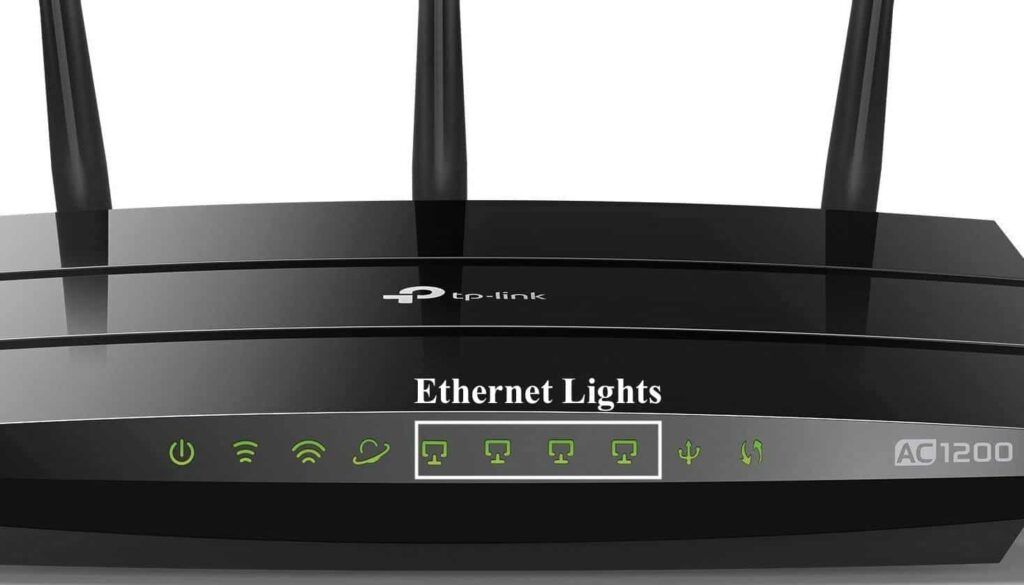
Meaning: Shows the status of devices connected through the ethernet port.
Ideal Light Color: Solid Green/White
Different states of Ethernet light and their meanings:
- On: If the ethernet symbol is on, a device is successfully connected to the router through the ethernet port.
- Off: If the ethernet LED is off, this indicates that there is no device connected to the router through the ethernet port or it is unable to detect any connection.
Try to clean the ethernet port or use another port. Check for any damages on the ethernet cable or try another cable if you have one.
5. USB
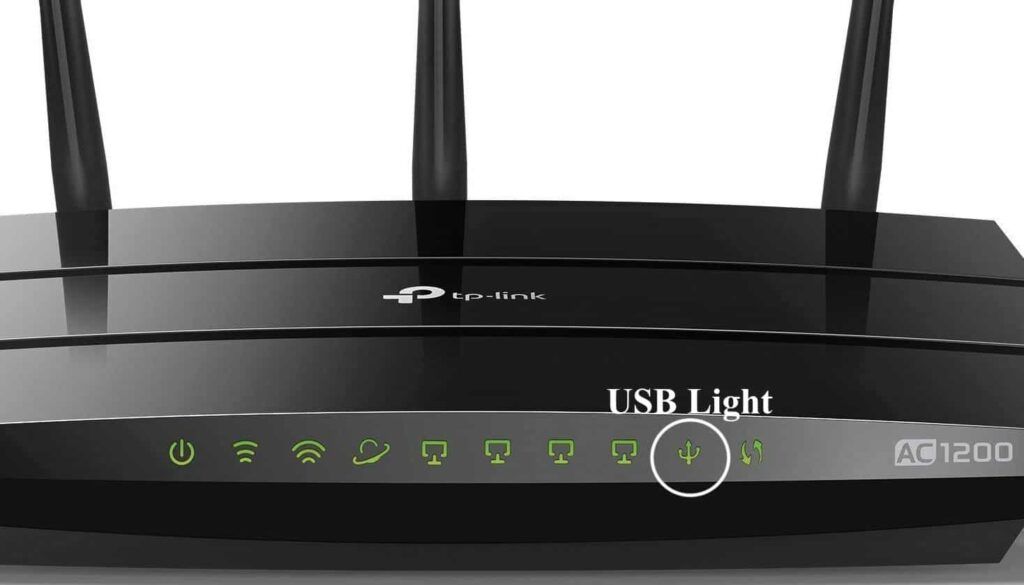
Meaning: Indicates the status of the USB connection to the router.
Ideal Light State: Solid light
Different states of USB light and their meanings:
- On: If the USB light is solid on, a device is connected to the router using the USB port.
- Flashing: A flashing USB light indicates that the router is connecting with the device and will be ready soon.
- Off or No Light: If the USB light is off, it implies that there is no device connected to the USB port or the router cannot identify the device.
- Check the USB port and see for any damage. Try using the USB device on any other device at your home.
6. WPS
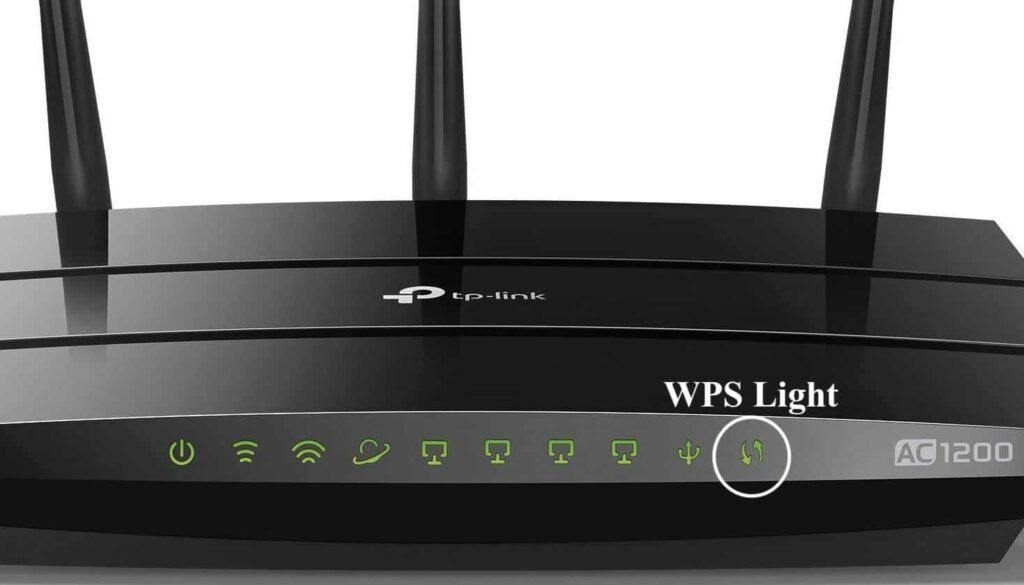
Meaning: Shows if the WPS mode is on or off.
Ideal Light State: Solid light
Different states of WPS light and their meanings:
- On: If the WPS light is on, you have activated the WPS mode. It will remain on for 5 minutes and then turn off automatically. You can turn it on again if you wish to.
- Flashing: A flashing WPS light indicates that your device is trying to connect with the router and the process is progressing.
- Off or No Light: If the WPS light is off, it implies that the WPS mode is turned off and there is no active connection.
Note: The pictures above are of TP-Link router lights for demonstration. Your router might have slightly different icons, but the meanings would remain the same.
Different Light Colors of a WiFi Router
The LED lights come in different colors. Green, Orange/Amber, Red, and White are the most common colors. Let’s see what these colors indicate:
1. Green
A green light indicates that the router is working fine. If you see a green light on your router, it shows that it is on and ready for use.
Related resources:
2. Amber or Orange
Amber or Orange light has many potential meanings. Some routers, like the TP-Link router, are going through a firmware update, which could be a sign of some error on other routers.
An orange light on the internet port means that your router cannot connect to the Internet. It can be due to an internet outage or another issue with your ISP. All you can do is wait for the service to come back.
3. Red
Red light is something you would not want to see on your router. A solid red light on the router indicates some connection error.
Related resources:
4. White
Most of the time, white light acts as the green light on some routers. So if you have a router showing a white light in the power symbol, it’s probably right and working fine.
However, in other cases, this could be a sign that your router is trying and unable to connect to your modem. In some routers, white light indicates that there is some problem in the firmware.
Related Resources:
- Verizon router blinking white
- Spectrum blinking white and blue
- Xfinity router blinking white
- Eero blinking white
Different States of Router Symbols
The routers have three states of lights: Stable, Blinking, and off or inactive. Let’s discuss them in brief:
1. Stable
In most cases, you would want to see a stable LED light on your router. It indicates that your router is working perfectly fine.
In some cases, if there is a stable LED in red or amber color, you might need to check a few things as there might be some connection error.
2. Blinking
There can be two cases if the LED is blinking:
Slow blinking: If the LED slowly blinks, the router is booting up or trying to connect to the internet. It will normally turn into a stable LED soon. But if it doesn’t, there is some network problem.
Rapid blinking: If you see that your router is blinking LED rapidly, it means there is some data transfer going on, and there’s nothing to worry about.
3. Off or No Light
If there is no light on the LED, it indicates that the router is off and not receiving power. On the other hand, if there’s no light on symbols other than power, it implies that the port is inactive or not detecting any connection.
Frequently Asked Questions
What lights should be on my router?
Your router should have solid lights on, particularly green color for the most time. This indicates that the router is active and everything is working fine. Some routers might have blue light instead of green color.
Should WiFi router lights be flashing or solid?
Most of the time, the router icons should be solid. However, there are times when it’s supposed to be flashing. A flashing light doesn’t always mean there is some problem, it indicates that the router is in the process of doing a task.
What if my router has all solid green lights but no internet?
If your router has all solid green lights but no active internet connection, it means the router is fine and there is some other problem with your network or the connected device. Try to restart your router; if that doesn’t work, contact your ISP.
How many LED symbols should be on the router?
Generally, there are seven types of lights on a router. This includes a Power light, Internet light, Ethernet light, USB light, WPS light, and Wi-Fi lights (2.4 GHz and 5 GHz). Depending on the model, your router might have some extra lights on it.
How to know if the router is bad?
If your router is not functioning properly, stops suddenly, ports are not working, or indicates wrong lights, it indicates that it has gone bad and it’s time to get a new one.
What does WPS mean on a router?
WPS stands for Wi-Fi Protected Setup. It is a router feature that connects a device to the network much easier than a typical method.
So that was everything you needed to know about the different types of lights on a router. I hope that now you know what each light on your router means and how to fix it if it’s not in the ideal state.
